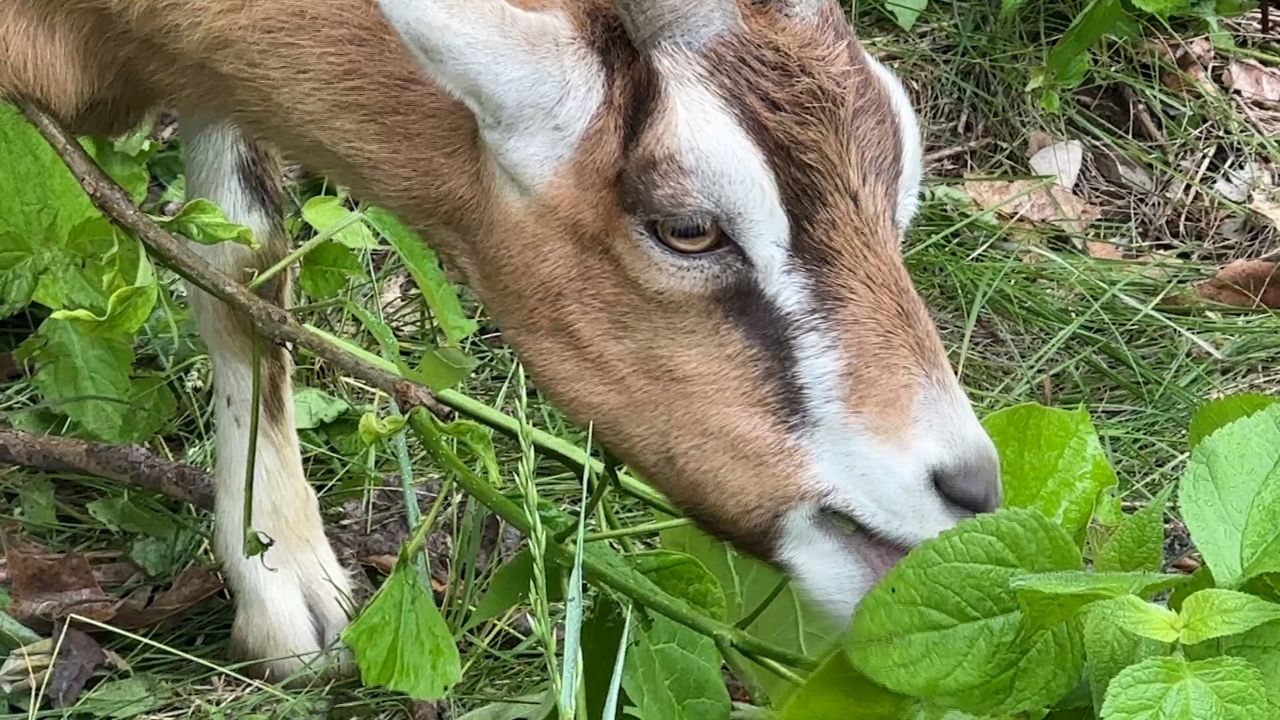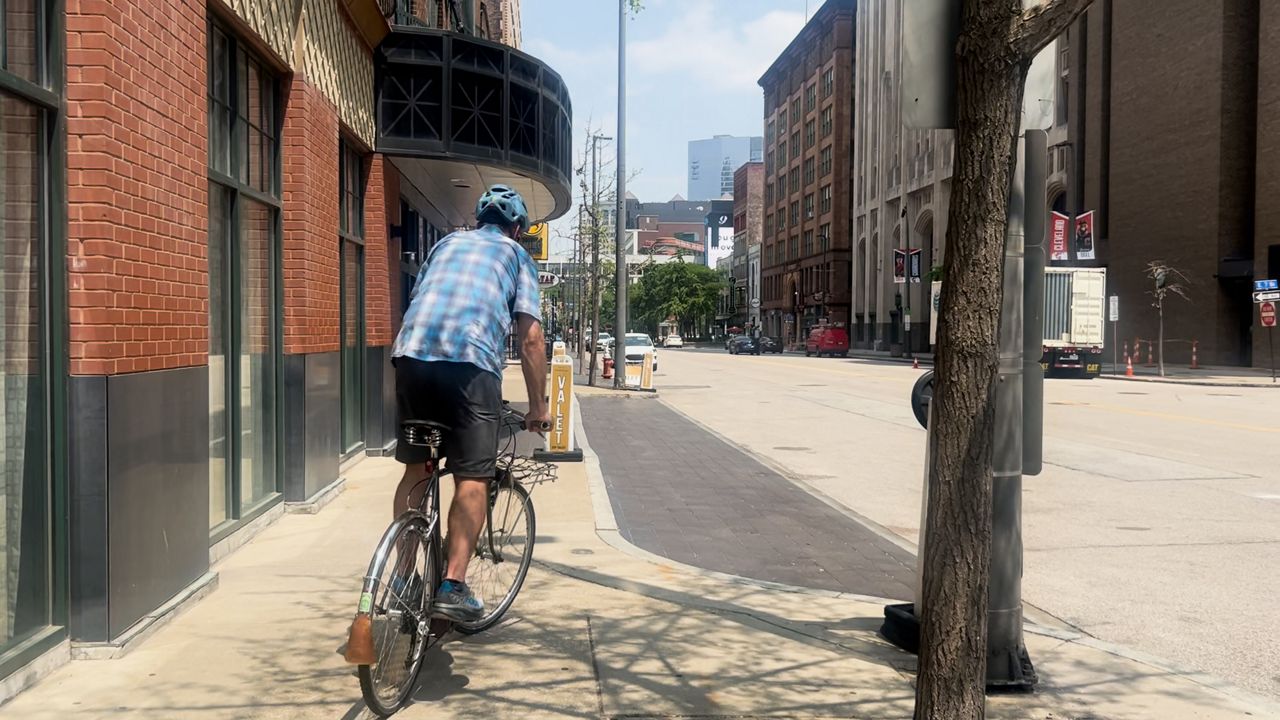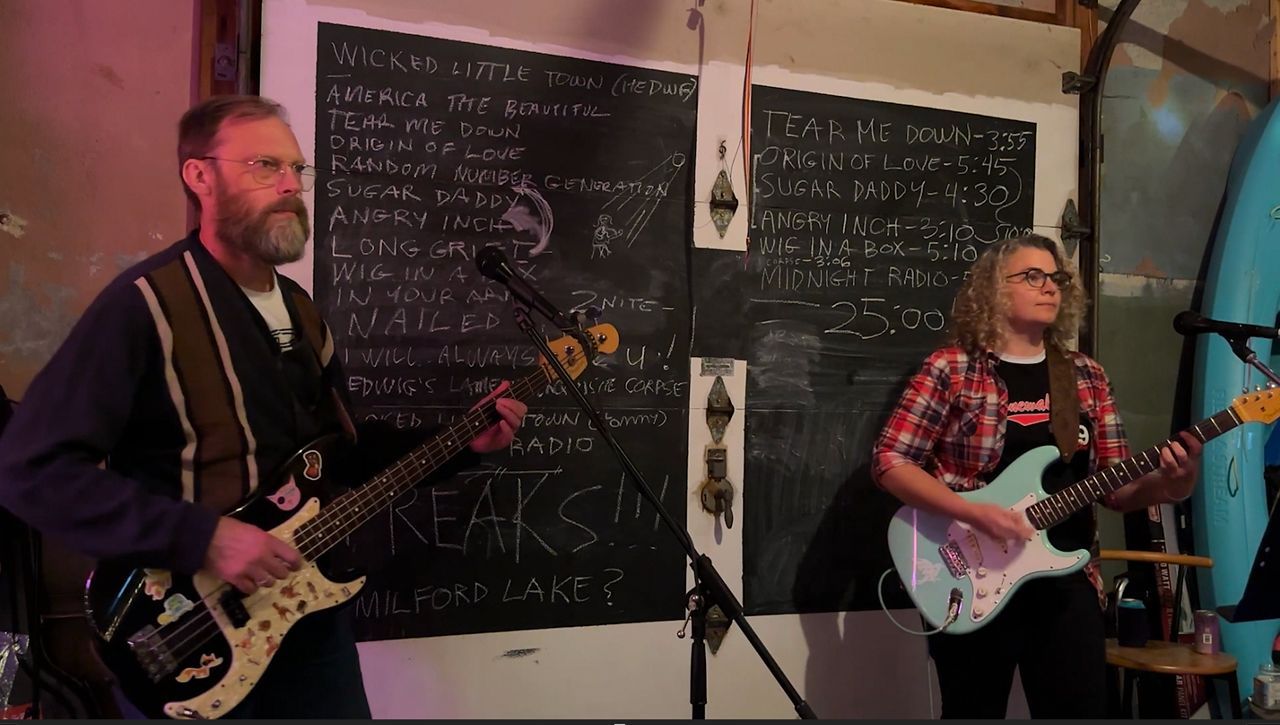HAMILTON, Ohio — Now that Memorial Day weekend has passed, and it's the unofficial start to summer, more and more people will spend time outside in city parks.
One thing parks struggle with this time of year is controlling and getting rid of invasive species. In southern Ohio, one park is using a rather unique way to get those plants under control.
Who would have thought that a group of 21 goats would easily solve an issue the city of Hamilton and Butler County Parks has been dealing with for years?
“They have done an excellent job eating their way through our issues," said Kevin Noonan, the assistant director of the Hamilton Parks Conservancy.
But that’s just the case, these goats are as friendly as they are hungry.
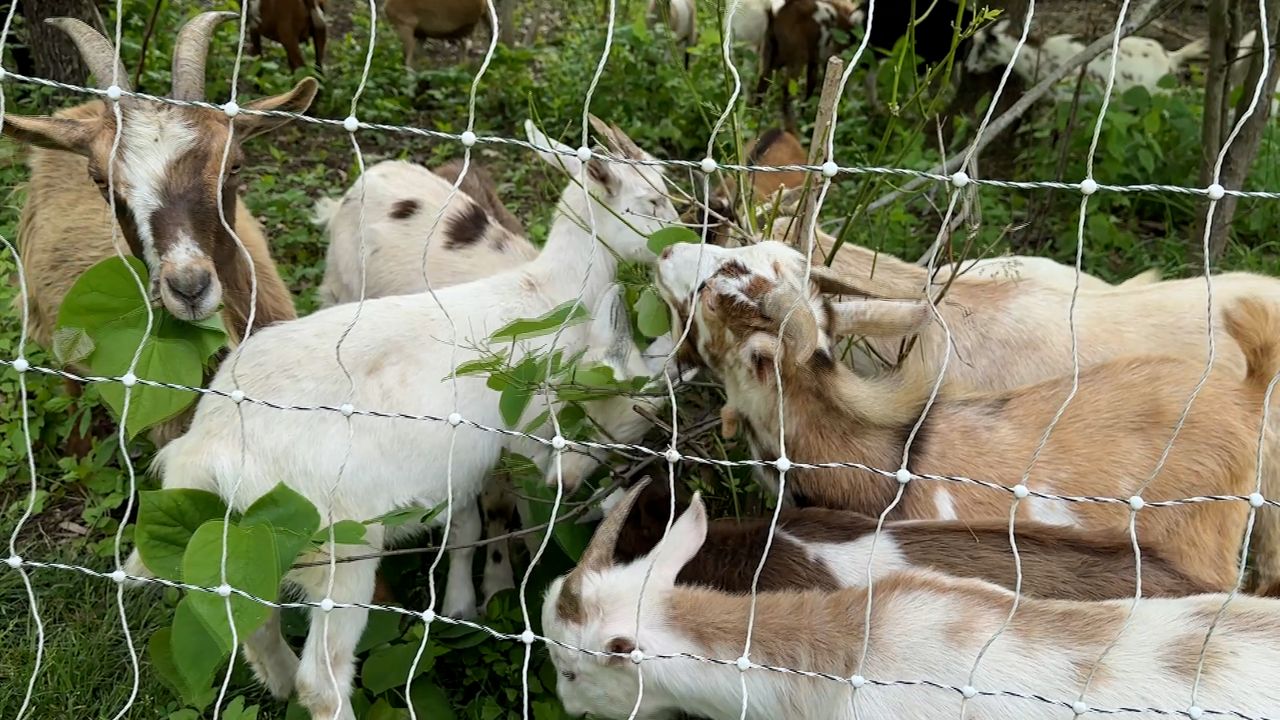
“It’s a unique way, it’s a clean way to do it and it’s a fun way to do it," Noonan said.
Miami Woods Park in Hamilton is a joint effort between Hamilton Parks Conservancy and Metro Parks of Butler County. The idea to bring goats here has been in the works for years.
“They eat everything in sight, which is great," said Katie Ely-Wood, the communications manager for Metro Parks of Butler County. "And they really do a great job of getting into the nooks and crannies of a natural area that would be really difficult for heavy machinery or even people to get to to remove the invasive species.”
In just one week, they’ve made a pretty big difference.
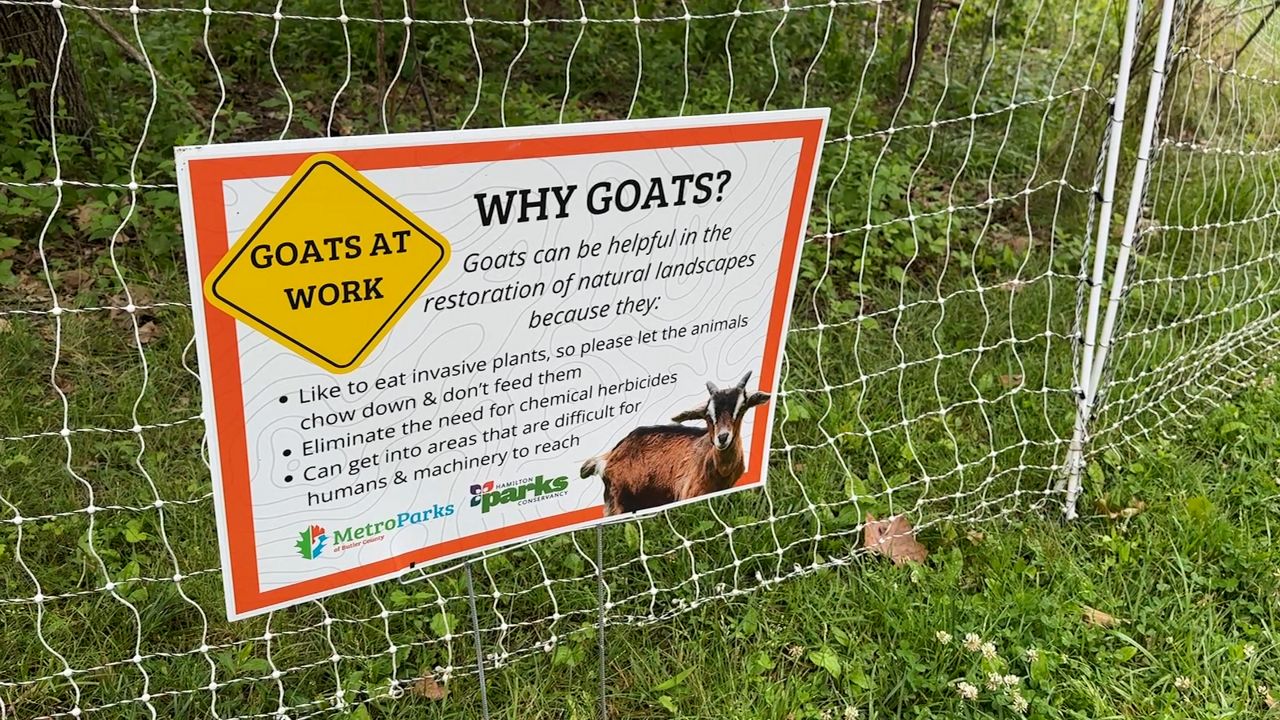
“They have stripped the entirety of everything you see lying here," Ely-Wood said.
The species of plants the parks hope these goats target include honeysuckle and poison ivy. But they tend to eat most anything green in their pathway.
“Any plant that they’re eating is going to make room for natural material plants that we really want to be here to grow," Ely-Wood said. "And that’s the most important thing.”
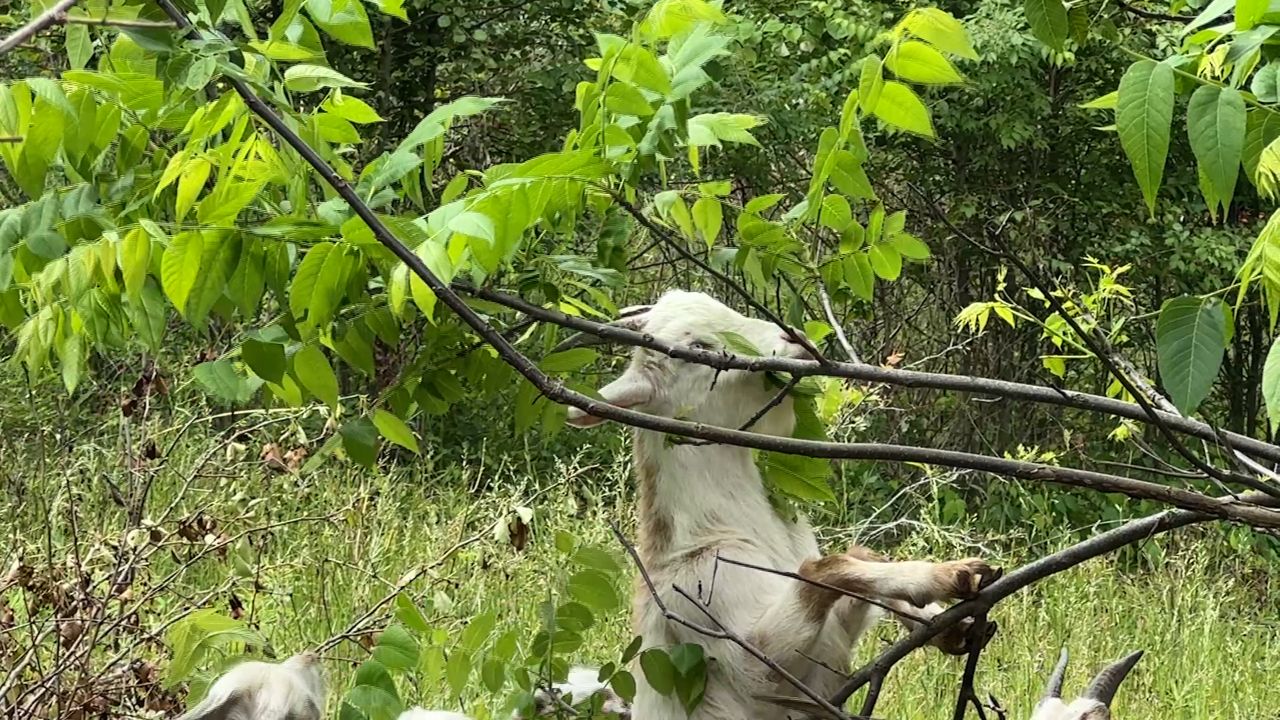
As the goats continue to do their job, it’s two-fold, in hopes of bringing more people into the parks this summer.
“We want to see people in our parks,” Noonan said. “That’s our main goal for this. This kind of doubles as yes, we are getting rid of invasive species, which is a main part of what we’re trying to achieve in our parks. But it’s also a great opportunity to have community engagement, have people come out and visit our parks.”




